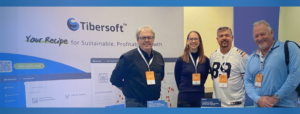Data is not valuable unless you (or your machines) are able to make better and/or faster decisions than you could without it. This is a fundamental truth, a first principle, that every organization ought to keep top of mind when formulating their data strategy. If the data is sitting in a data lake and no one is touching it and you can’t leverage it, then it’s not creating value. If an organization is “data driven,” or using analysts or technical talent for ad-hoc mining of a data store, it’s a good start… But this leaves a lot on the table. Insight driven organizations, on the other hand, are curating and managing multiple sources of data to answer specific business questions and delivering them in a format appropriate for the decision being made.
There is one peculiarity in foodservice that many sales leaders are aware of – transaction data is exceptionally difficult to manage. Transaction data comes in the form of rebates and billback claims, from hundreds of different sources, in different formats with lots of duplicates. For foodservice, just getting those claims into a format where the data is accurate, timely, and usable is a significant challenge, but a necessary one to overcome in order to get sales visibility at the operator level.
However, getting sales visibility is not enough to enable your sales teams to make better decisions. At this stage, you might find your marketing teams, finance teams, and managers of large accounts with a team of analysts able to justify hours of data mining and analysis to make only the largest decisions, but many people on your sales teams, many of whom are far more time constrained and less analytically inclined, will not be capable of improving many of their decisions with data. To create real value on your sales teams with your massive stores of data, you need insights and insight delivery. This is an often-neglected factor when teams are formulating their data strategy, and we’ve seen many organizations invest millions in data acquisition and availability, only to have poor utilization when they try to present it in a business intelligence tool to their sales teams.
Many organizations start with the goal of becoming data driven. Your goal should be to become insight driven.
What does it mean to be Insight Driven, and what is the impact?
Being insight driven means transforming data into insights that speed up or improve decision making. In addition, those insights need to be delivered in a format and context appropriate to the setting where the decision is made without the analytical task eating into the time necessary to perform their core job function. Data driven teams, in contrast, are making data available to their teams, but it’s being delivered in a format that requires an analyst or technical resource to mine and interpret it. We find that, on data driven sales teams, only a small number of analytically inclined sales reps are using data tools and only for the most important decisions. On insight driven teams, almost every rep is using insights to make decisions on a weekly or even daily basis.
Many manufacturers with available data fall somewhere in between these two extremes, but many remain closer to the “data driven” end of the spectrum. Data is delivered such that individuals with above average technical and analytical capability can use it for some tasks, but a typical sales rep or manager is not able to use it without support.
The bottom line? Insight driven organizations are able to improve the quality and speed of decision making at every level, and therefore generate considerably more value from their data with similar resources invested.
Three Common Ingredients that Make an Insight Driven Team
Going from data driven to insight driven is a path unique to each organization. However, in our experience, there are 3 ingredients insight driven teams and organizations tend to have in common:
- A robust understanding of the people using their analytical tools, what decisions they have to make, and the environment in which they have to make them.
- An intuitive and flexible analytical interface, a strong data team and, by extension, data confidence.
- Strong leadership support and alignment, from the executive suite to managers of individual contributors.
With respect to its #1 placement on our list of ingredients, the best way to start becoming more insight driven is to increase your understanding of the decisions the individual contributors and managers in your sales organization need to make on a daily, weekly, or monthly basis. This understanding allows you to produce the right insights (here’s an example of insights we use for our customers).
- What decisions are being made? Are they strategic and nuanced, or operational in nature?
- Who is making the decision, a seasoned analyst or a salesperson in the field?
- How much time do they have to make that decision; two weeks, or 15 minutes during their break?
The second ingredient is an intuitive and flexible analytical interface, with a strong data team that’s delivering high-quality data that your teams can be confident is correct. This can be accomplished by hiring strong in-house technical talent or using an outside firm. An important note is that the “right” analytical interface should be underpinned by an understanding of the decisions that interface is intended to help make.
Finally, you need strong leadership support and alignment. Specifically, you’ll need to align on a roll-out plan for your new platform, an education plan for your intended users, and expectations for use of your platforms to solve the inevitable problems that come about from changing engrained habits across your teams. Like your user interface, this plan needs to be rooted in the decisions you intend to improve.
How We Can Help
In foodservice manufacturing, sales organizations – particularly those companies that partner with Tibersoft – that have necessary data, insights, and insight-delivery to make informed decisions around their products, customers, and trade agreements experience many benefits, including:
- Accountable sales teams, with performance metrics dictated by on-demand data rather than self-reporting.
- With segment visibility, organizations can take a nuanced approach to new products, new markets, or new partnerships with solid conversion plans.
- More efficient trade spend, shortening the time to get insights into trade from weeks to months to minutes and hours.
- Significantly improved support for customers and trade partners, with the ability to rapidly troubleshoot problems using on-demand customer insights.
- Sales teams can build call plans for specific initiatives based on purchasing volume, rather than mining out of date distributor lists.
With over 20 years in the industry, our experts at Tibersoft have helped dozens of foodservice manufacturers navigate the journey from data blind, to data driven, to insight driven. Tibersoft doesn’t just make the data available, we make sure it’s complete and accurate — in a timely manner. With our deep understanding of foodservice sales organizations and their business decisions, we transform that data into dozens of ready-to-use insights tailored for those specific decisions and provide advisory services along the way to meet the unique needs of your organization.
Schedule time with one of our experts.
Related resources: IFMA Sustainable Growth Ebook (tibersoft.com)





